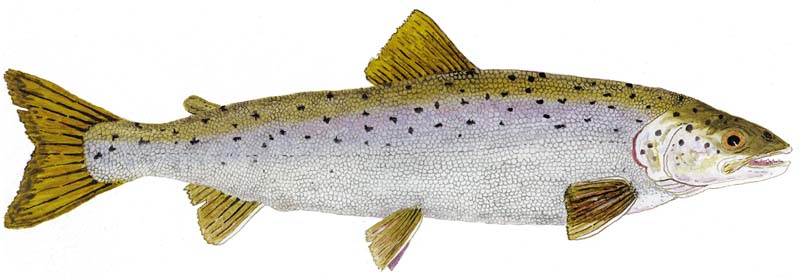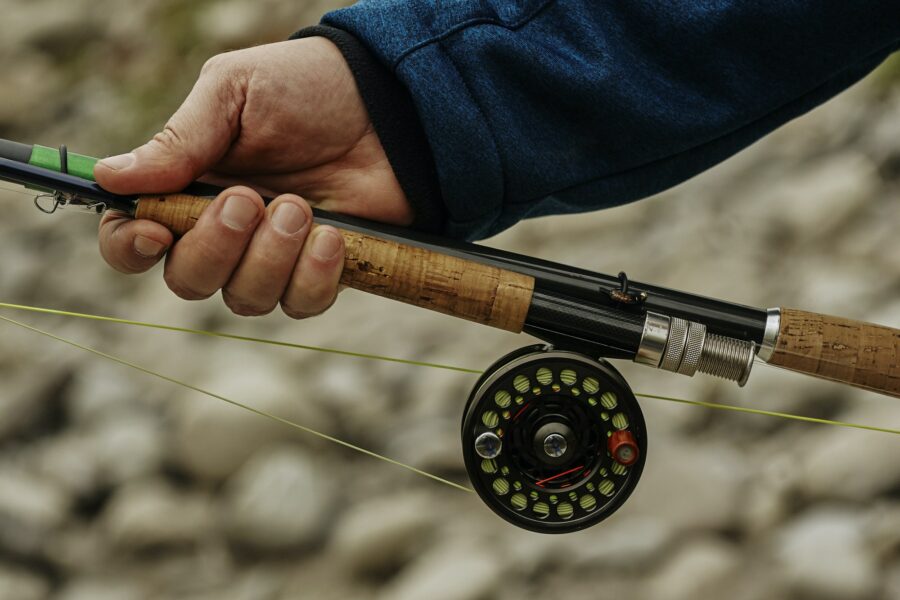
Fishmadman team member Jesper Fohrmann ties the Green Machine.
The last hurrah for hook-tied fly tiers in our tying group
By Henry Clement
A recent visitor to our group, Nancy P, with considerable hook-tied fly-tying experience, joined us to experience the art of tube fly-tying.
Homogeneity called out
Before our visitor was halfway into tying our chosen tube, the Green Machine Dry Fly pattern, she asked the question aloud, which is not often verbalized – leaving us only to think of it in puzzlement.
Why do you all tie tube flies?
Angie Roth, our tying group’s only retired attorney, a government prosecutor, gave a Hemingwayesque answer: ‘Because we got tired of losing flies.’ Naturally, our visitor queried, ‘What do you mean?’

Illustration by Thom Glace – rainbow trout, brown trout, and brook trout. Used with permission.
Logic
‘Have you ever,’ Angie said, ‘lost a fly to a stump, a rock, or because a fish mauled it?’ Nancy replied, ‘Of course.’
Angie went on; I paraphrase going forward. A tube fly is birthed without a hook. Therefore, a hook to be used is the angler’s choice at any point in time for any reason that takes advantage of a fishing situation.
Light wire hooks
A light wire hook is preferred with tube flies, generally used to fish for trout, grayling, bass, etc. That hook type is worthy of defending against being bent with fish-on. If it does get bent or damaged in any way, it is replaced. If it lodges in a rock, the fly suffers no fait accompli. It is replaced.
NOTE: Light wire hooks are not generally used for saltwater species.
Nancy P exclaimed holy shite!

Adult Atlantic salmon shown here is fresh from the ocean. Illustration by Thom Glace.
To write or send us letters the old-fashioned way:
Fishmadman
Stakhaven 8DK-2500
Valby, Denmark
Telephone: +45 22133113 or +4530111463
Website: www.fishmadman.com


